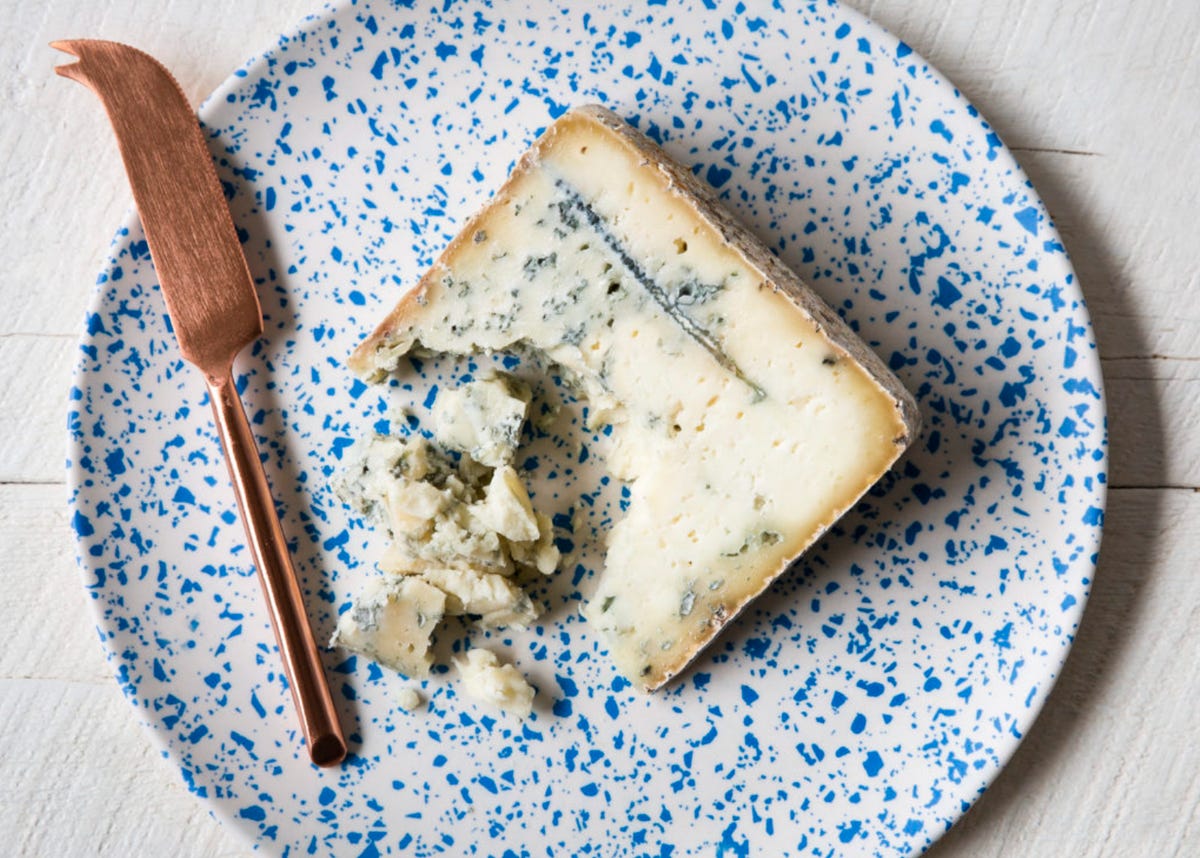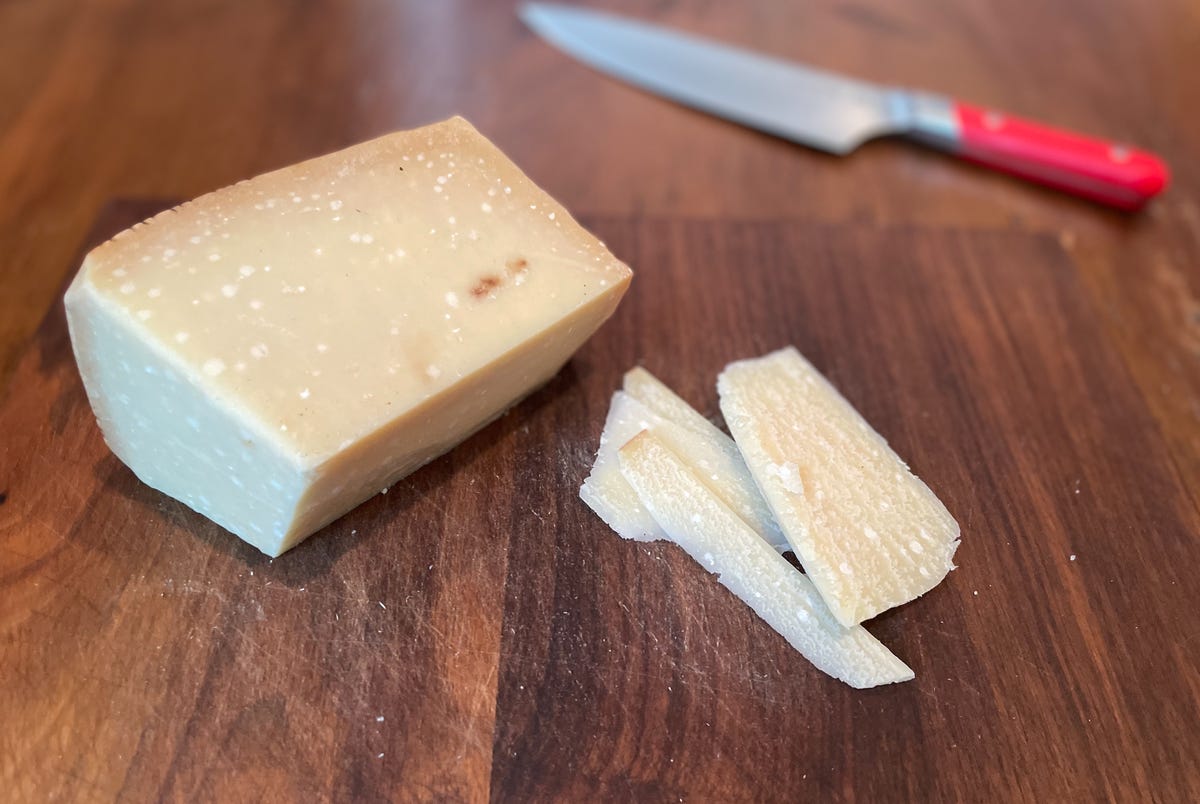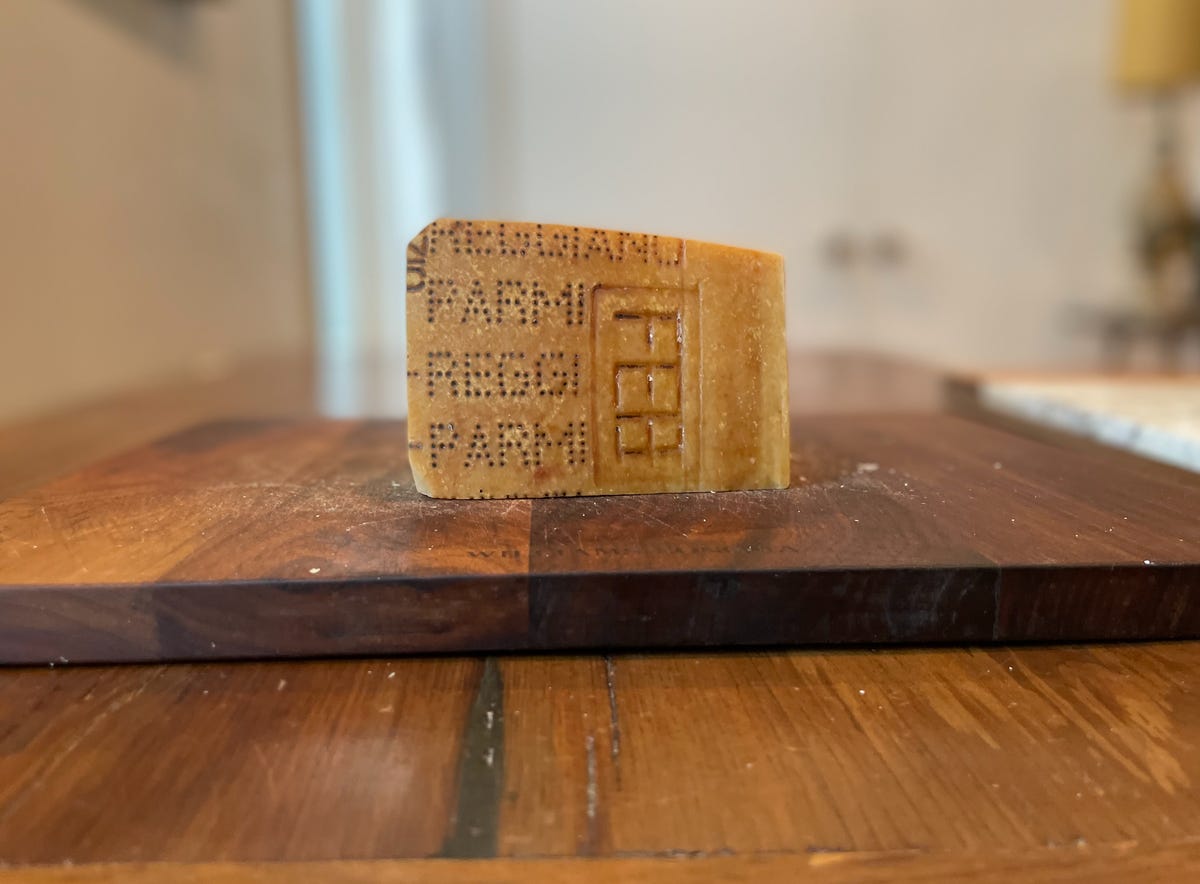 Why You Can Trust CNET
Why You Can Trust CNET
Our expert, award-winning staff selects the products we cover and rigorously researches and tests our top picks. If you buy through our links, we may get a commission. Reviews ethics statement
Ah, cheese. There's nothing better than a huge block of fancy cheddar, gouda or camembert -- and nothing worse than letting a good block expire before it's eaten. If you want to keep your cheese fresh for longer, you might want to reconsider your storage practice. Keeping your best blocks wrapped up in plastic may be causing them an early demise.
For tips on proper cheese storage, I cornered an expert, John Montez, a certified cheese professional and the education coordinator for New York's Murray's Cheese.
"Cheese is a preserved product," says Montez. "It's got a lot of things helping it be preserved. It's high in acid and salt and has a lot of the water removed compared to milk. So it's rare that you would ever have to throw out a piece of cheese." Cheese, in other words, is built to last; ergo, an investment worth having.
How you cut and store your cheese matters, however, in terms of treating it in such a way as to extend its vibrancy for as long as possible. You don't need a lot of fancy cheese gadgets to make cheese last for weeks or months -- just some basic tools, supplies and know-how.
With Montez's help, here's what you need to know about cheese in order to understand its aging potential, and about how to best cut and store your fancy cheese so you never have to throw it away.
Cheese is a living thing

A little extra mold on your cheese should not deter you from hanging onto it. Just scrape it off with a knife and carry on.
Murray's CheeseFrom talking fridges to iPhones, our experts are here to help make the world a little less complicated.
Certain cheeses, like blue cheese, wear their mold more proudly than others, but it may be helpful to think of cheese as the controlled decay of milk, and know that there's pretty much always mold involved regardless. The snowy-white rind of brie and other bloomy-rind cheeses are a type of mold, as is the mottled outer surface of a firmer cheese like Gruyere. But fear not! If you've ever taken a probiotic, then you already inherently understand that not all microbes are bad.
Read more: There's a Lot of Fake Parmesan Cheese Out There. Here's How to Tell
This is all to say that, first of all, a little extra mold on your cheese shouldn't deter you from hanging on to it. "If you see it molds up a little bit, generally you can scrape off that mold and it's no problem," says Montez. Because of the lack of water content in cheese, food mold can't penetrate it very deeply like it would with many other food products. "Look out if it's black mold or something like that," he says, "but the thing is, it's rare that a piece of cheese becomes unsafe to eat. It's going to become unpalatable to you long before it's unsafe."
From talking fridges to iPhones, our experts are here to help make the world a little less complicated.
Cut your cheese so it's easier to wrap

Precise cuts that leave flat surfaces make it easier to wrap your cheese so it doesn't spoil.
David Watsky/CNETKeeping the cheese palatable, then, is the real goal. How you store your cheese is going to have the biggest impact on its longevity -- but how, when and what you cut it with can also play a part in its ongoing flavor and texture success. Precise cuts that leave flat surfaces make it easier to wrap in the most effective manner, and keeping the cheese whole for as long as possible is also helpful to its longevity.
"Minimizing the surface area (exposed to air) is going to prevent cheese from drying out or getting moldy," says Montez. "So, for example, if you're going to prep cheese ahead of time for a party, the longer you can leave it as a whole piece, the better," or if you're a habitual meal-prepper, resist the urge to cut up a whole chunk of cheese for easier access, and just cut as you go.
As for making clean cuts, "you can get done pretty much any job you need to get done with a chef's knife," says Montez. "When it comes to softer cheeses, a skeleton knife is good to have as something that reduces the knife's drag, or a wire-based cheese harp which is used in a lot of cheese shops. Nowadays, you can even find cheese boards that have a built-in wire. These are really good for leaving as much of the rind intact on bloomy rind and other soft cheeses as you can."

There is specialty cheese paper you can buy, but butcher or parchment paper will work just as well.
David Watsky/CNETOne of the two main goals when wrapping and storing cheese is to allow a little bit of airflow so that your fancy cheese can still breathe. "The main idea here is you don't want to wrap it in plastic," says Montez, "There are a lot of active microorganisms in cheese and you want to keep them alive by the time you're going to eat it."
If you're wondering why then, was the wedge of precut cheese you bought from the grocer or cheese store wrapped in plastic, presumably by cheese professionals, the answer is marketing. "It's mostly for display purposes," says Montez, since you're not likely to buy what you can't see. "There are cheese shops where they exclusively wrap in paper, but that's rare. If you're a big shop that moves a lot of product, it's not a problem if you know if the cheese is wrapped in plastic for a couple of days, but beyond that, it can be bad for the cheese."
You can extend the life of your artisanal cheeses, then, by rewrapping them in paper after you bring them home. "Formaticum makes great cheese paper that is specially formulated to keep the outside from drying out while allowing the cheese to breathe," says Montez. "If you don't have cheese paper, wrapping it in wax paper, parchment paper, butcher paper or whatever you have is good."

Formaticum makes excellent cheese storage bags and wrapping paper.
FormaticumWhile it can take some serious practice to achieve the crisp folds of experienced cheesemongers, think of your cheese as a little present (which it is, obviously), and wrap it as though you were using festive wrapping paper. "You want the paper making contact with the piece of cheese," says Montez, "so crease as you go, and make sure all of the faces of the cheese are contacting the paper in an even, flat way." If this seems at all intimidating, Formaticum also makes handy, cheese storage bags where no origami-level folding is required.
How and where to store cheese so it lasts longer

Cheese you intend to consume within a couple of days doesn't necessarily even need refrigeration. And real Parmigiano Reggiano never needs to see the inside of your fridge.
David Watsky/CNET"What you're really trying to accomplish when you store cheese is keeping the cold air from the refrigerator from blowing on it, because that's going to cause it to dry out more quickly," says Montez. Wrapped cheeses should either go into a drawer within your fridge, into a corner where the fan doesn't entirely reach, or even in a small container with the lid cracked to keep air circulation available.
Hard cheeses, or even some softer cheeses you intend to consume within a couple of days, don't necessarily even need refrigeration. You can simply seek out something to cover them such as a cheese dome, or for the truly committed, a cheese grotto. According to Montez: "Parmigiano Reggiano never needs to see your refrigerator. You can keep it pretty much indefinitely at room temperature."
For more, here's how to tell which cheap wines are actually good, and how much money you can save shopping at Trader Joe's instead of the supermarket.